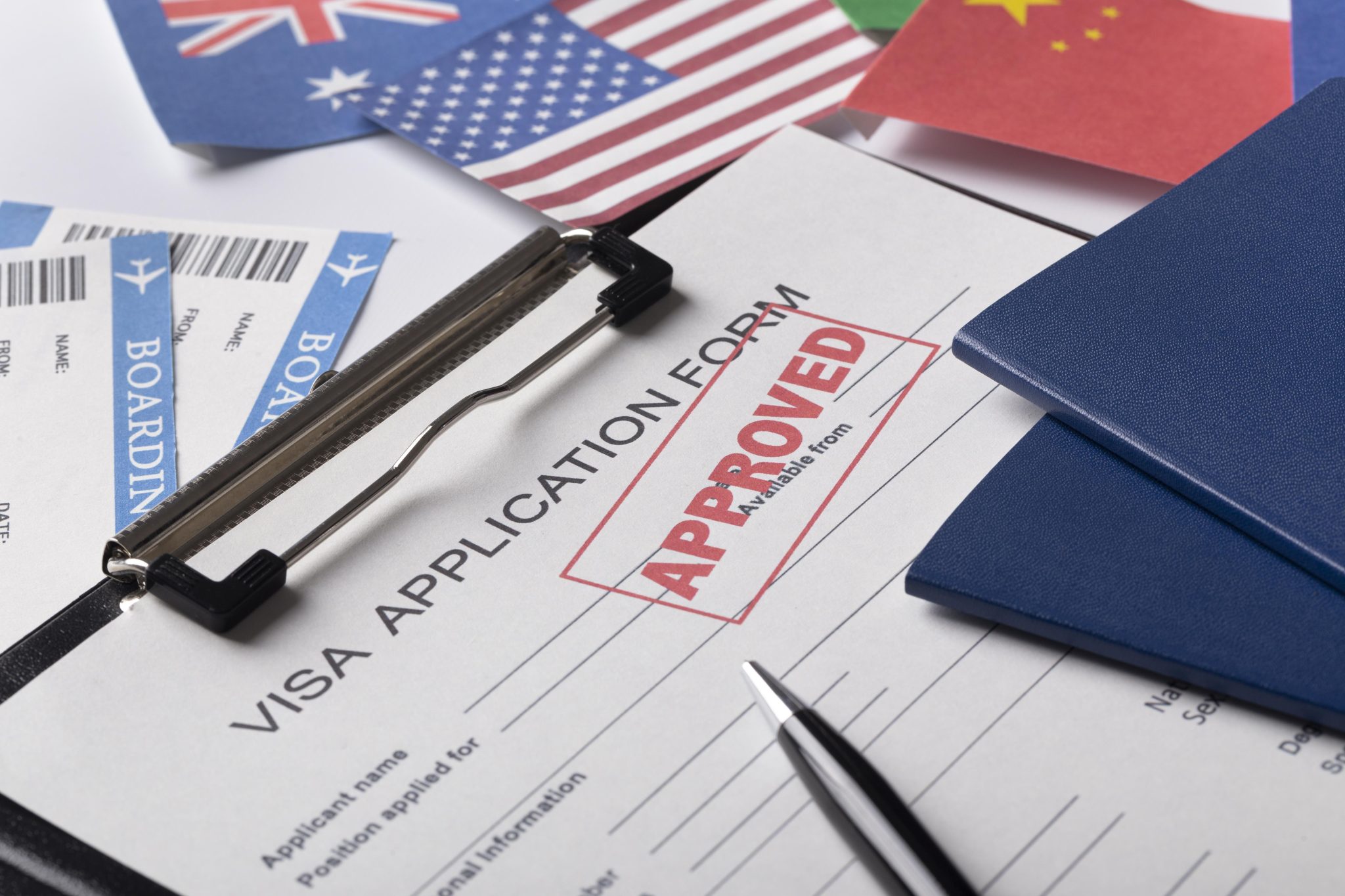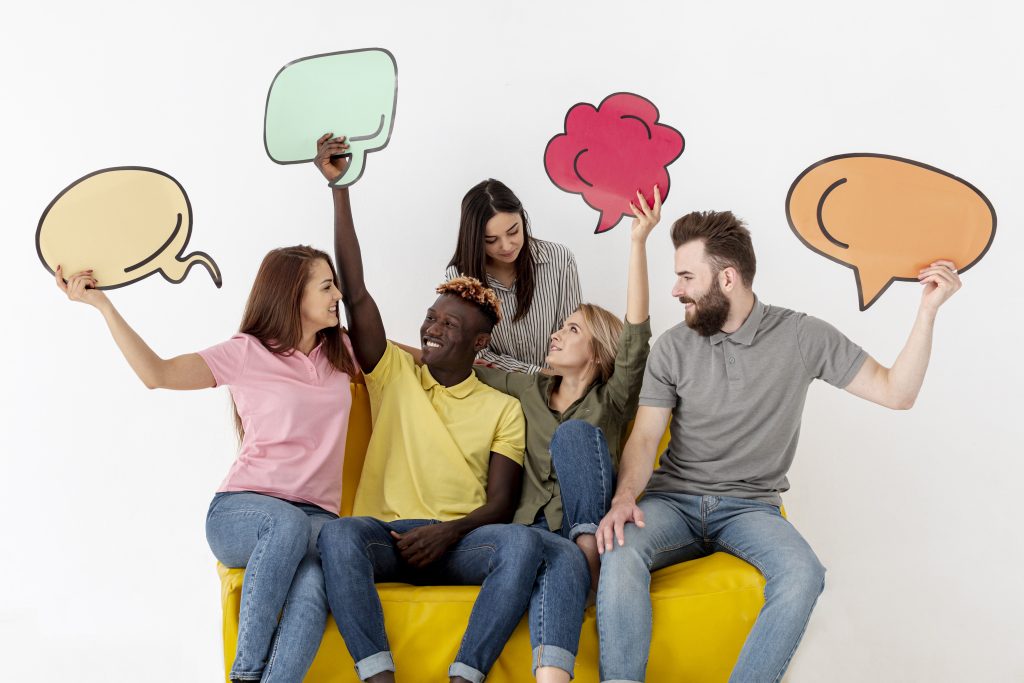Language and Communication Guide: Understanding the Key Differences and Connections
Humans have always communicated. Long before we learned to use structured language, we signalled danger, showed affection, and shared intent using looks, tone, and movement. Language came later as an upgrade to a system already in place. The two are intertwined in that they rely on each other to convey meaning. Still, there are clear differences between language and communication that you should know.
While language is a system, communication is a process that uses language to exchange meaning. In this article, we clarify the differences and show the relationship between language and communication.

Definition of Language and Communication
Here’s a simple scenario to show how language and communication are different.
You might hear someone say a baby can’t communicate because they don’t use language. But that’s not true. In reality, the baby hasn’t learned to use words yet, but still communicates by crying, smiling, or making facial expressions. That’s communication without language. Let’s define the two clearly.
What is Language?
Most languages have a related language family from which they evolved. For instance, most of the languages spoken in Europe, the Middle East, and parts of South Asia evolved from the Indo-European language family. This explains why they share grammar rules, alphabets, and other linguistic features.
USCIS officers rely on the translator’s statement guaranteeing that the translation is accurate and complete to proceed with the case. Without this statement, the officer is unable to verify its validity.
The applicant for the petition or request from the immigration office shoulders the burden of proof. In other words, the applicant must show that they meet the USCIS requirements. A translator certificate or statement adds more proof of the applicant’s eligibility for the application.
What is Communication?
Communication is a process of exchanging information through a uniform channel, whether that’s language, symbols, sign language, or body language. It is referred to as a process because it involves several steps to deliver a message.
Communication among humans, animals, and computerized systems is not limited because meaning can be conveyed in various forms. For instance, if two people do not speak the same language, they can communicate through signing. In other words, communication does not always rely on language to be effective. Provided both parties understand each other, communication has occurred.
There are various types of communication depending on the medium and the process used to deliver information. These include;
- Verbal communication: In this type of communication, people use spoken or signed language to convey messages. The speaker can speak or sign the words that carry the information they want to pass along.
- Non-verbal communication: Here, the parties do not use words or language to communicate. Instead, they use body language, eye contact, and other cues to express themselves. Most people communicate using these cues, with research showing that they account for 93% of all communication.
- Written communication: While humans started speaking around 50,000 years ago, writing systems were not developed until about 5,000 years ago. Humans use writing, whether on paper or electronic devices, to communicate.
- Visual communication: For visual communication, humans use their eyes to decode a message. Visual symbols used to encode messages include signage, traffic lights, or symbols. It’s more like non-verbal, but the focus is on visuals.
Communication is broader than language because it encompasses everything that humans do to pass along messages, which includes using language. However, the two can have distinctions regardless of their dependence on each other.
Key Differences Between Language and Communication
The definitions of language and communication provide you with a straightforward difference between the two. Let’s go into more details about those details.
Tool vs. Process
We defined language as a tool and communication as a process. But what does it mean? In some forms of communication (the process), we use language (the tool) to deliver messages.
Let’s use cooking as an analogy to differentiate language as a tool and communication as a process. Language is like the raw ingredients (words, grammar, and structure). On the other hand, communication is the cooking process.
It’s how you combine those ingredients to create a meal others can understand and enjoy. This is why you can have perfect ingredients, but if the meal is undercooked or confusing, the message won’t land.
Symbols vs. Meaning
Language is expressed in symbols, while communication depends on the context in which those symbols are used. Failure to provide enough context, language alone cannot be used to carry meaning. This is a common problem, particularly in machine translations, where words are translated literally without considering the context in which they are used.
Dynamic vs. Static
Language is dynamic, while communication is largely static. To elaborate, languages evolve and change vocabulary, pronunciation, grammar, among other linguistic features. This nature of language can affect how it carries meaning.
On the contrary, the process of communication barely changes. You may argue that it can change with changes in technology. While that’s true, the core principles of the whole process are what remain unchanged. These principles include the existence of a message, a sender, a channel, and a receiver.

Purpose of Language and Communication
Language and communication have several functions that define them. These functions also elaborate on the differences that exist between them.
Functions of Language
The main purpose of language is communication. However, language can also be used to express identity, play, imaginative expression, and emotional release. In identity expression, people use specific language based on their career, background, sexual orientation, and such aspects.
Artists use imaginative language to express abstract ideas. For instance, writers use language to paint scenarios, whether factual or fictional. This is the same with emotional release, where people express their frustrations through language. The uses of language touch on various aspects of life that make humans human.
What is the Function of Communication?
Communication aims to inform, persuade, regulate, and entertain. Language plays a key role in achieving these objectives. However, they can still be achieved whether we use language or other forms of communication.
Given that communication is a process, its success depends on all elements involved in the process. It depends on whether the language used is understood by the parties involved in the process, as well as the sender, channel, context, and nature of the message. Failing to account for these aspects increases the risks of miscommunication.
Final Thoughts
Professionals who use language to communicate know how important it is to understand when and how to differentiate the two. If you’re in the translation industry, you know that structured language matters as much as context and cultural norms do. These elements dictate how the message is encoded and interpreted by the receiver. Making these connections starts with understanding the key differences between language and communication.

Working with language experts who understand these differences helps you avoid costly miscommunications and deliver clear messages. Contact The Language Doctors to get support from professionals who specialize in accurate, culturally aware communication.


